Text this colour links to Pages. Text this colour links to Family Trees. Place the mouse over images to see a larger image. Click on paintings to see the painter's Biography Page. Mouse over links for a preview. Move the mouse off the painting or link to close the popup.
All About History Books
The Chronicle of Abbot Ralph of Coggeshall describes the reigns of Kings Henry II, Richard I, John and Henry III, providing a wealth of information about their lives and the events of the time. Ralph's work is detailed, comprehensive and objective. We have augmented Ralph's text with extracts from other contemporary chroniclers to enrich the reader's experience. Available at Amazon in eBook and Paperback.
Moray Aisle, Edinburgh Cathedral is in St Giles' Cathedral, Edinburgh.
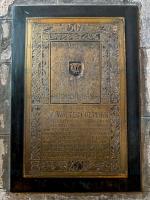
Moray Aisle, Edinburgh Cathedral [Map]. After 1532. Memorial to Walter Chepam who introduced printing in Scotland in 1507.
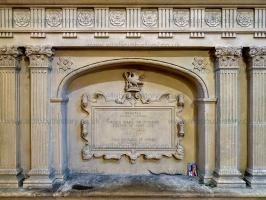
Moray Aisle, Edinburgh Cathedral [Map]. 1570. Memorial to James Stewart 1st Earl of Moray Regent (age 39).

On 7th June 1650 William Hay (age 39) was executed. He was buried in the same vault as his leader James Graham 1st Marquess Montrose (deceased) in the Moray Aisle, Edinburgh Cathedral [Map]. The
William Hay: Around 1611 he was born. Diary of John Nicoll. The tyme appoyntit for the folempnitie of his funerallis being cum, quhilk wes upone Settirday the elevint day of Maij 1661, his bones wer brocht bale agane from the Abay church to St. Geillis kirk of Edinburgh, at the bak of the tomb quhair his grandfehir wes buryed, and thair buryed him in maner following: — In the firft, the haill inhabitantes of Edinburgh, Cannogait, Potterraw, and Welt Port, being all in armour, to the number of 23 companyes, with thair difplayit baneris, gairdit the Toun of Edinburgh and Cannogait, on both fydes of the ftreit, from the kirk of Halyrudhous to the kirk of St. Geillis in Edinburgh. His Majefteis leiff gaird of hors, in the firft place, ryding alongs on thair hors bak, with thair carabines at thair fadillis, and thair drawin fwordis in thair handis, to the number of 160; nixt unto thame, 26 young boyis, all cled in murning habites from thair crounes and top of thair heidis to thair heillis, careying his airmes and uther branches of his familie; thairefter, marched up the proveft, bailleis, and counfell of Edinburgh, all in murning habites; and nixt unto thame, the burrowis and barones that wer memberis of Parliament; then came a gentillman all cled in bricht airmour on horfbak, with a trumpettour befoir him, ryding in a new fute of the Marques livray, and ane led hors behind him; thaireftir, come 18 gentill men, fum of thame careying in thair handis long baneris of honor, and utheris careying his fpures, gloves, breift and bak pece, all of airmour, on the poyntes of long ftaves; thaireftir, come ane led hors covered with his ryche broydered mantle, quhairwith he and his predicefforis wer wont to ryde at parliamentis, and his allakay richlie cled with liveray and airmes on breift and bak; then come the flour of the nobilitie all in good ordor; then the haill heraldis and purfevantis in thair koates of airmes, many of thame careying feverall honouris in thair handis; eftir thame came ane led hors all covered in blak; eftir him come the Lord Lyoun with his koat of airmes; thaireftir come many of the Marques freindis, all of thame in murning, and every ane of thame careying fum honoris in thair handis, one of thame haifand his parliament rob careying, ane uther a croun on a velwot cufcheon under a craip, and fum utheris with feverall foirtes of honores in thair handis; then come the corps and bones in a coffin, careyed under a riche paill, careyed by many honorable lordis and gentill men, with fex trumpetis all founding befoir; then came many noble ladyes cled all in murning behind the paill; eftir thame come the Erie of Middletoun, his Majelteis Commiffioner, in a koatche with fex hors, all cled in murning, and his koatche cled over in blak, none being in koatche bot himfelff, and the Lord Ramfay fitting in the bute bairheidit careying his commiffion; — the haill bellis of Edinburgh and Cannogait ringand all the tyme. Then come ten gentillmen careying each of thame in thair handis long flages, and uther peces of honor on the endis of long ftaves, befoir the bones of the Laird of Dalgatie, quhais bones wer raifed with the faid Marques from the Burrow Mure, quho wes alfo layd in the Abay kirk, as being beheadit for being in airmes with the Marques for the lait King; then nixt to these honores come two trumpettouris founding; eftir thame come the bones in a coffin, careyed by mony honorable gentillmen, with many epitaphes, and uther paynted paperis thairupone; and fo wes caryed in to the faid Yle of St. Geillis kirk, and layd on the rycht fyde of the faid noble Marques.
![]() Become a Member via our 'Buy Me a Coffee' page to read complete text.
Become a Member via our 'Buy Me a Coffee' page to read complete text.
In January 1661 the limbs, body and head of James Graham 1st Marquess Montrose were collected for burial; see Diary of John Nicoll 04 Jan 1661 and Diary of John Nicoll 11 May 1661. On 11th May 1661 the remains were given a splendid funeral and were buried in the Edinburgh Cathedral [Map].
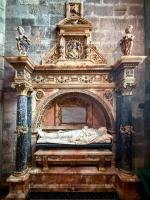
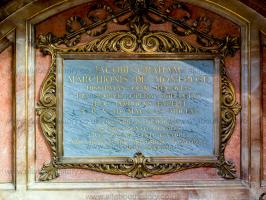
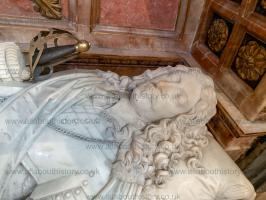
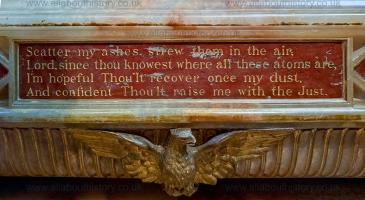
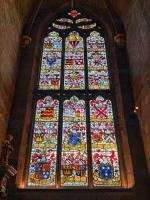
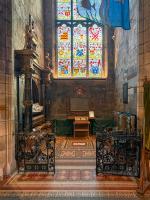
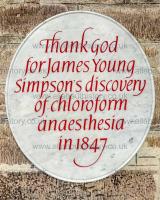
Moray Aisle, Edinburgh Cathedral [Map]. 1847. Memorial remembering James Young Simpson's discovery of Chlorform Anaesthesia.
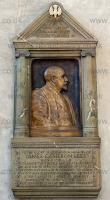
Moray Aisle, Edinburgh Cathedral [Map]. After 1891. Memorial to John Inglis of Glencorse, Lord Justice General of Scotland, Lord President of the Court of Session.
Moray Aisle, Edinburgh Cathedral [Map]. 1904. Bronze memorial to Robert Louis Stevenson sculpted by Augustus Saint-Gaudens (age 55).
Upon Stevenson's move to Manasquan, New Jersey, he once again met with Saint-Gaudens to sit for his portrait. It was this sitting which gave Saint-Gaudens a lasting impression of Stevenson. Because it was decided that the author looked too stiff simply sitting in no useful occupation, Saint-Gaudens suggested he should pose in his natural state: writing. To this Stevenson not only agreed, but took the suggestion to heart by writing a letter to Homer Saint-Gaudens, Augustus' son. Once the plaque was completed, the author and the sculptor never met in person again, but did maintain a friendship as evidenced by the exchange of several letters. Stevenson referred to Saint-Gaudens as his "God-like sculptor," and Saint-Gaudens was pleased to consider the author who captivated his literary attention a friend.
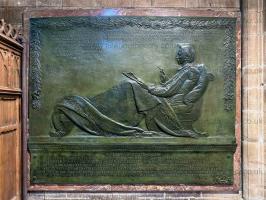
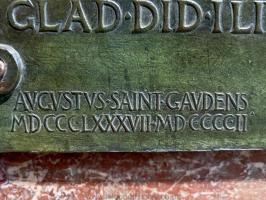
Moray Aisle, Edinburgh Cathedral [Map]. 1906. Memorial to Margaret Oliphant, 1828-1897, sculpted by Charles d'Orville Pilkington Jackson (age 18).
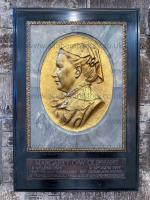
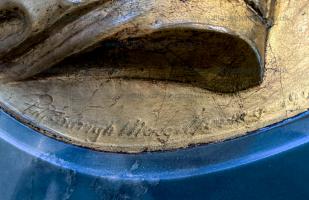

Moray Aisle, Edinburgh Cathedral [Map]. After 1913. Memorial to James Cameron Lees, 1834-1913. Dean of the Thistle and Chapel Royal. Chapain in Ordinary to Quen Victoria, King Edward VII and King George V.
All About History Books
The Chronicle of Walter of Guisborough, a canon regular of the Augustinian Guisborough Priory, Yorkshire, formerly known as The Chronicle of Walter of Hemingburgh, describes the period from 1066 to 1346. Before 1274 the Chronicle is based on other works. Thereafter, the Chronicle is original, and a remarkable source for the events of the time. This book provides a translation of the Chronicle from that date. The Latin source for our translation is the 1849 work edited by Hans Claude Hamilton. Hamilton, in his preface, says: "In the present work we behold perhaps one of the finest samples of our early chronicles, both as regards the value of the events recorded, and the correctness with which they are detailed; Nor will the pleasing style of composition be lightly passed over by those capable of seeing reflected from it the tokens of a vigorous and cultivated mind, and a favourable specimen of the learning and taste of the age in which it was framed." Available at Amazon in eBook and Paperback.
Moray Aisle, Edinburgh Cathedral [Map]. Memorial to John Stewart Blackie, 1809-1895, sculpted by Charles d'Orville Pilkington Jackson (age 35).
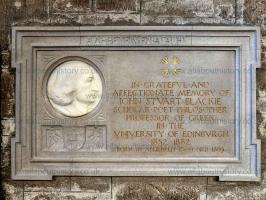
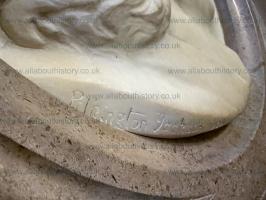
Moray Aisle, Edinburgh Cathedral [Map]. 1923. Memorial to Thomas Chalmers sculpted by Charles d'Orville Pilkington Jackson (age 35).
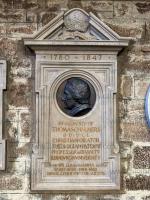
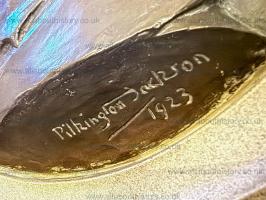
Moray Aisle, Edinburgh Cathedral [Map]. 1923. Memorial to Dr John Brown, Physician, Essayist and Author, sculpted by Charles d'Orville Pilkington Jackson (age 35).
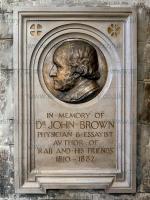
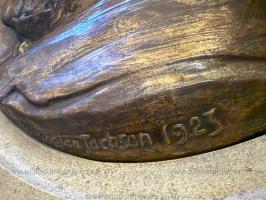
Moray Aisle, Edinburgh Cathedral [Map]. Around 1935. Memorial to poet Robert Fergusson, 1726-1750, sculpted by James Pittendrigh Macgillivray (age 79).
He died from an injury sustained in a mysterious accident. His headstone in Canongate Kirkyard was designed and paid for by Robert Burns, who also wrote the epitaph that it bears.
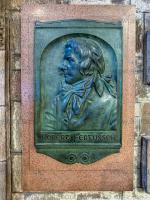
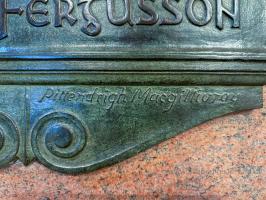
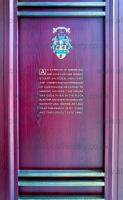
Moray Aisle, Edinburgh Cathedral [Map]. 1992. Organ as tribute of admiration and love for Iver Ronald Stuart Salvesen.
Iver Ronald Stuart Salvesen: In 1901 he was born to Johan Thomas Salvesen. In 1957 he died.
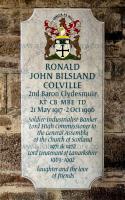
On 2nd October 1996 Ronald John Bilsland Colville 2nd Baron Clydesmuir (age 79) died. His son David (age 47) succeeded 3rd Baron CLydesmuir of Braidwood in Lanarkshire.
Memorial in the Moray Aisle, Edinburgh Cathedral [Map].
David Ronald Colville 3rd Baron Clydesmuir: In 1949 he was born to Ronald John Bilsland Colville 2nd Baron Clydesmuir.